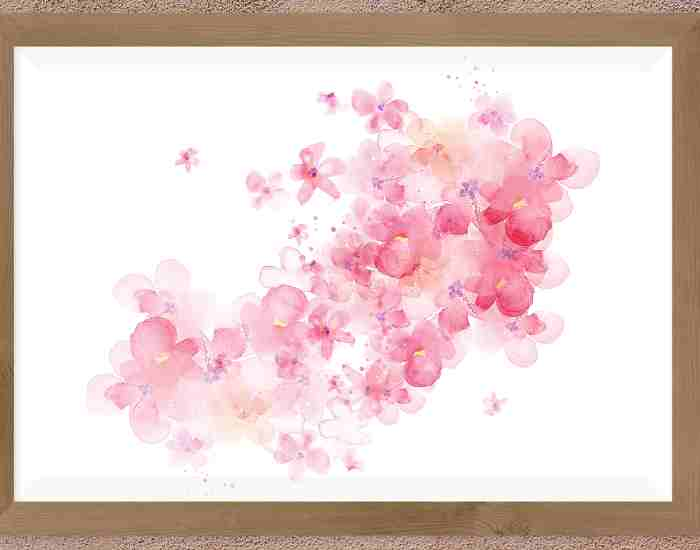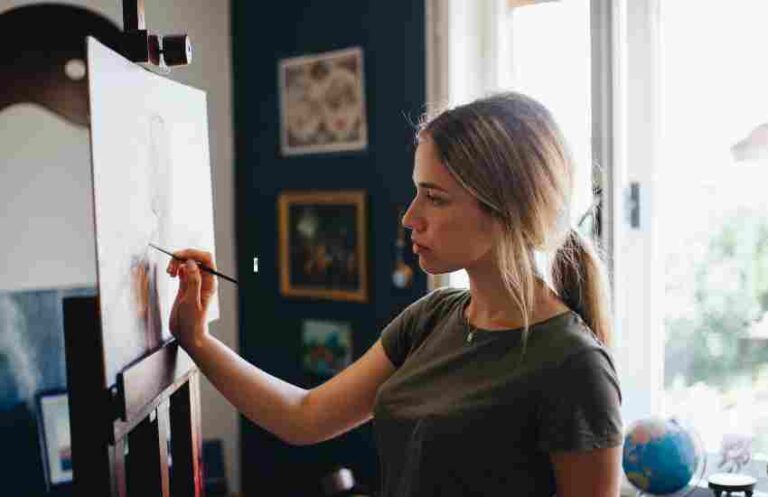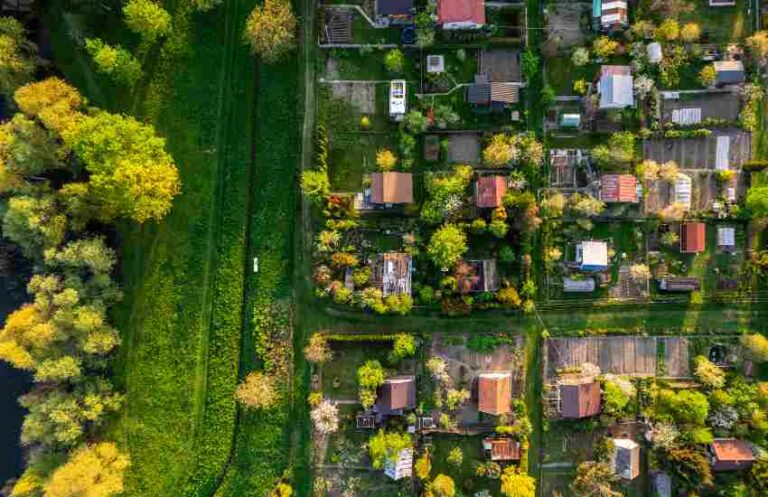The art world is undergoing a significant transformation with the advent of digital tools and software. Technologies such as digital painting software and 3D modeling tools are allowing artists to explore new artistic expressions and styles that were previously impossible or impractical. The use of digital tools like Adobe Photoshop, Corel Painter, and Blender provides artists with an expansive toolkit to innovate and experiment with their work.
Digital art and new technologies
Digital art encompasses a range of practices where technology plays a central role in the creation process. Artists now employ digital mediums to produce works that leverage new technologies for enhanced creativity. For instance, generative AI tools enable artists to create dynamic and evolving pieces that adapt based on algorithms and data inputs. This integration of technology into the creative process opens up avenues for novel artistic forms and designs.
Real-life Example: Refik Anadol
One notable example is Refik Anadol, an artist renowned for his use of generative AI to create immersive visual experiences. Anadol’s work, such as his “Machine Hallucinations” series, uses AI to analyze vast datasets and generate visualizations that reflect patterns and aesthetics beyond human capability. This application of AI in art challenges traditional methods and introduces new forms of creativity.
Impact on Traditional Art Techniques
The shift towards digital art impacts traditional art techniques by introducing new forms of creativity and design. Traditional artists are integrating digital tools into their workflows, leading to hybrid approaches that blend classical and contemporary techniques. For example, mixed media art combines traditional painting with digital elements, creating layered and multifaceted artworks.
Innovations in Art Installation and Exhibitions
Virtual reality and interactive art
Virtual reality (VR) and interactive art are redefining how art is presented and experienced. VR allows for the creation of immersive environments where viewers can interact with art in virtual worlds. These technologies provide opportunities for artists to craft dynamic installations that engage the audience in unique ways.
Real-life Example: TeamLab
An illustrative example is TeamLab, a collective known for its immersive environments that utilize spatial computing. Their “Borderless” exhibition in Tokyo features interactive installations where visitors can interact with digital projections, resulting in a constantly evolving art experience. These installations leverage virtual environments to offer a new dimension of engagement with art.
Enhancing audience interaction
The use of VR and interactive art technologies enhances audience interaction by providing new ways to experience art in physical spaces. For example, interactive exhibitions allow visitors to become part of the artwork, actively influencing the artistic content through their actions. This approach fosters a deeper connection between the audience and the art as they become participants in the creative process.
AI and Machine Learning in Art Creation
Artificial intelligence and machine learning
Artificial intelligence (AI) and machine learning are at the forefront of revolutionizing art creation. These technologies enable the generation of data-driven artworks by analyzing patterns and inputs to produce novel artistic outputs. AI’s role in art extends beyond mere automation, influencing creative processes and artistic styles.
Real-life Example: AICAN
AICAN, an AI artist developed by Dr. Ahmed Elgammal, exemplifies the impact of AI on art creation. AICAN utilizes machine learning algorithms to generate artistic works that blend historical styles with contemporary aesthetics. This innovation challenges conventional notions of creativity and explores how artificial intelligence can contribute to the creative process.
Analysis of AI’s Influence
AI influences artistic styles and creative processes by introducing algorithmic elements into the art creation process. The big picture is that AI’s role in art is not limited to generating art but extends to shaping how artists approach creativity and design. Studies show that AI’s integration into art challenges traditional methods and introduces new forms of artistic expression, reflecting a profound shift in the art world.
Blockchain and NFTs in the Art World
Blockchain technology and NFTs are transforming art market transactions and ownership.
Blockchain technology and NFTs (non-fungible tokens) are reshaping the art world by introducing secure, transparent methods for buying, selling, and owning art. NFTs are unique digital assets verified through blockchain technology, which ensures that each token is one-of-a-kind and cannot be duplicated. This technology provides a data foundation that records the ownership and transaction history of each NFT, making the process transparent and secure.
Real-life Example: Beeple’s “Everydays“
A prime example of this transformation is the sale of Beeple’s “Everydays: The First 5000 Days.” This digital artwork was sold as an NFT for an astonishing $69.3 million at Christie’s auction house in 2021. The sale of “Everydays“ highlighted the growing importance of digital ownership and NFTs in the art market. This record-breaking transaction underscored how NFTs are becoming central to the art market, especially in the digital realm.
Impact of NFTs and Blockchain on Art Transactions
NFTs and blockchain technology are impacting art transactions by providing a secure and transparent way to conduct sales. The blockchain acts as a public ledger, recording every transaction and ensuring the authenticity and ownership of each piece of art. This reduces the risk of forgery and fraud, which have long been concerns in the traditional art market. For artists, NFTs offer a new revenue stream, as they can sell their work directly to collectors without intermediaries while also retaining a percentage of future sales through smart contracts.
Social media and digital platforms for artists
Social media and digital platforms offer new avenues for artists to promote and sell their work.
Social media and digital platforms have revolutionized how artists promote and sell their work. These platforms provide artists with the tools to reach a global audience, engage with fans, and market their art without relying on traditional galleries or agents. Instagram, Twitter, and Facebook are just a few of the platforms where artists can showcase their portfolios, share their creative processes, and connect directly with potential buyers.
Real-life Example: Banksy and Instagram
Banksy, a world-renowned street artist, uses Instagram to reach millions of followers and share his work directly with the public. This platform allows him to bypass traditional art market channels and maintain control over his brand and artistic expression. By engaging with fans on social media, Banksy can communicate his message, promote his art, and influence contemporary art trends in real time.
Analysis of Digital Platforms Expanding Market Reach and Visibility for Artists
Digital platforms expand the market reach and visibility of artists by allowing them to connect with a broader, more diverse audience. This shift alters traditional promotion methods, where artists were often dependent on galleries, curators, and critics to reach collectors. Today, artists can build their brands independently, create online stores, and participate in virtual exhibitions. This democratization of the art market means that more artists can gain recognition and sell their work, regardless of their location or background.
The Effects of Technology on Art Consumption and Market Trends
Changing Dynamics in the Art Market
Technological advancements are reshaping the art market by influencing how art is valued, sold, and consumed. The rise of online art auctions and platforms such as Art Basel‘s digital offerings exemplifies how technology is changing the way art is bought and sold. These platforms make it easier for collectors to purchase art from around the world, breaking down geographical barriers and making the art market more accessible.
Real-Life Example: Growth of Online Art Auctions and Platforms
The growth of online art auctions has been significant, particularly in recent years. Platforms like Art Basel, Sotheby’s, and Christie’s have embraced digital technologies to reach a global audience, leading to increased sales and higher visibility for contemporary artists. For instance, Art Basel‘s online viewing rooms have attracted thousands of visitors and generated millions of dollars in sales, highlighting the impact of digital technologies on market trends.
Analysis of Technology’s Impact on Art Market Dynamics
Technology is fundamentally altering art market dynamics by facilitating online sales and digital transactions. This shift has led to the emergence of new market trends, such as the rise of digital art and the increasing importance of NFTs. Studies indicate that online art sales grew by 32% in 2020, demonstrating the significant impact of technology on the art market. This trend is expected to continue, with more galleries and auction houses embracing digital platforms to reach global collectors.
Audience interaction and engagement
Tech innovations change how audiences experience and interact with art.
Tech innovations are transforming how audiences experience and interact with art, leading to more engaging and immersive experiences. Traditional art exhibitions often relied on passive viewing, where visitors observed artworks without much interaction. Today, technologies like virtual reality (VR) and augmented reality (AR) are creating immersive art experiences that invite viewers to participate in the artwork itself.
Real-Life Example: Interactive Installations and Virtual Environments
Interactive installations and virtual environments are becoming increasingly popular in contemporary art exhibitions. For example, TeamLab‘s immersive art spaces allow visitors to interact with digital projections, creating a dynamic and participatory experience. These installations use advanced technologies to blur the lines between the digital and physical worlds, offering new ways for audiences to engage with art.
Effects on Traditional Art Venues
These changes are having a profound impact on traditional art venuesencouraging them to adapt to new technologies and offer more interactive and participatory experiences. Museums and galleries are increasingly incorporating tech-driven exhibits to attract younger, tech-savvy audiences. This shift is not only enhancing the visitor experience but also redefining the role of art venues in the digital age.
FAQs
How Is Technology Affecting Traditional Art Forms?
Technology impacts classical art methods by introducing digital tools and new mediums, leading to significant transformations in traditional techniques. Artists who once relied solely on physical materials like canvas, oil, and clay are now exploring digital painting software, 3D modeling tools, and virtual reality to create their work. This shift enables the fusion of traditional and modern methods, expanding the boundaries of artistic expression. For example, painters can use tablets and styluses to mimic brushstrokes and textures, while sculptors can design complex structures in 3D before physically constructing them. Digital platforms like Adobe Photoshop and Procreate have become standard tools for many contemporary artists, allowing them to experiment with colors, layers, and textures in ways that were previously impossible.
What role does AI play in contemporary art?
AI contributes to artistic expression by generating artwork and influencing creative processes through machine learning algorithms. Artists can use artificial intelligence to analyze vast datasets, identify patterns, and even produce original artworks that reflect unique styles. Generative adversarial networks (GANs), a type of AI, are particularly influential in this field. These networks can create images, music, and other forms of art by learning from existing datasets. For example, AICAN, an AI artist, has produced works that have been exhibited alongside human-created art, challenging traditional notions of creativity and authorship. AI-driven tools like DeepArt and Runway ML are increasingly popular among artists who wish to explore new forms of expression, blending human intuition with computational precision.
How Are NFTs Transforming the Art Market?
NFTs change art transactions by providing digital ownership and transparency through blockchain technology. Non-fungible tokens (NFTs) are unique digital assets that represent ownership of a specific piece of content, such as artwork, music, or videos. The blockchain ensures that each NFT is verifiable, traceable, and cannot be duplicated, which adds a layer of security and authenticity to digital art transactions. This technology has revolutionized the art market by enabling artists to sell their digital works directly to collectors, bypassing traditional intermediaries like galleries and auction houses. High-profile sales, such as Beeple’s “Everydays: The First 5000 Days” for $69.3 million, illustrate the growing importance of NFTs in the art world. By providing artists with new revenue streams and collectors with a transparent and secure way to purchase art, NFTs are reshaping the way art is bought, sold, and valued.
What Are the Benefits of Social Media for Contemporary Artists?
Social media enhances visibility, market reach, and promotion for artists, providing a platform for global engagement. Platforms like Instagram, Facebook, and Twitter have become essential tools for artists to showcase their work, connect with fans, and reach potential buyers. Social media allows artists to build a personal brand, share their creative process, and interact with a global audience, all from the comfort of their studio. For example, artists can post images of their work, share behind-the-scenes videos, and even conduct live streams to engage with followers in real-time. These platforms offer opportunities for artists to participate in online communities, collaborate with other creatives, and gain exposure to new markets. By using social media strategically, artists can increase their visibility, expand their network, and ultimately drive sales and commissions.
Conclusion
Technology’s impact on contemporary art is reshaping the art world in profound ways. Digital tools and new mediums are transforming traditional techniques, allowing artists to explore innovative forms of expression. AI and machine learning are revolutionizing the creative process, enabling the generation of data-driven artwork that challenges conventional ideas of creativity. NFTs are redefining art market transactions by providing a secure and transparent means of digital ownership, while social media platforms are expanding the market reach and visibility of contemporary artists, enabling them to engage with a global audience.
As technology continues to evolve, its influence on the art world will likely deepen, leading to further innovations in how art is created, distributed, and consumed. The integration of AI, blockchain, and digital platforms will not only expand the possibilities for artistic expression but will also democratize access to art, making it more accessible to a broader audience. Artists, collectors, and art institutions will need to adapt to these changes, embracing new tools and methods to stay relevant in an increasingly digital landscape.
For those interested in understanding modern artistic trends, exploring the intersection of technology and art is essential. By examining how digital tools, AI, and blockchain are shaping contemporary art, one can gain deeper insights into the future direction of the art world. Whether you are an artist, a collector, or simply an art enthusiast, embracing these technological advancements will enrich your appreciation of the ever-evolving landscape of contemporary art.
References
- Beeple’s “Everydays: The First 5000 Days” at Christie’s Auction House
- AICAN: AI-Generated Art: Research on AI in Creative Processes
- Digital Tools for Artists: Adobe Photoshop, Procreate, and 3D Modeling Software
- Social Media’s Role in Art Promotion: Case Studies on Artists Using Instagram and Twitter for Global Engagement
- Blockchain Technology and NFTs: An Analysis of Blockchain’s Role in Art Market Transactions and Ownership
More Post



